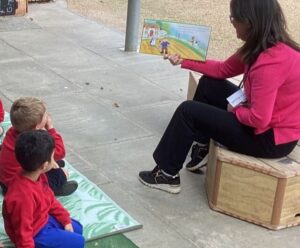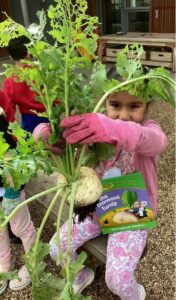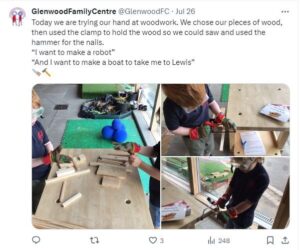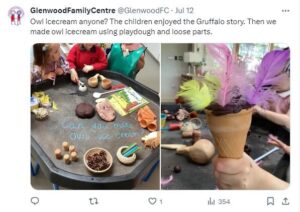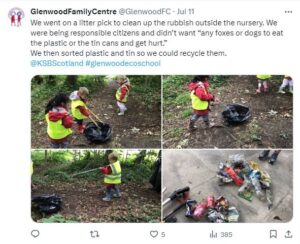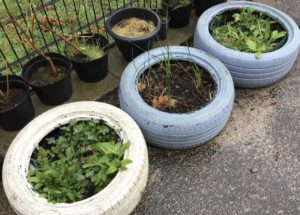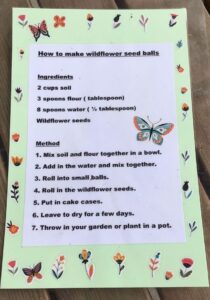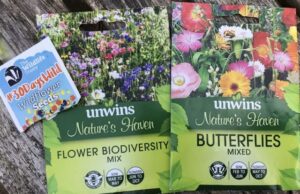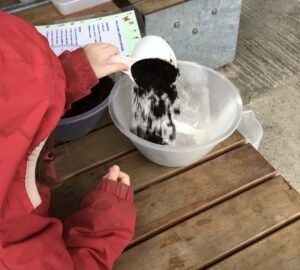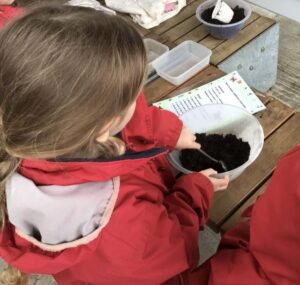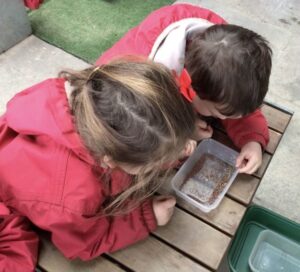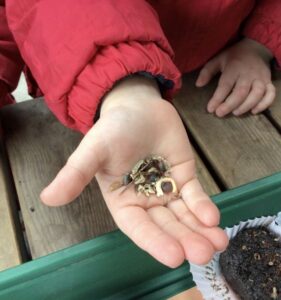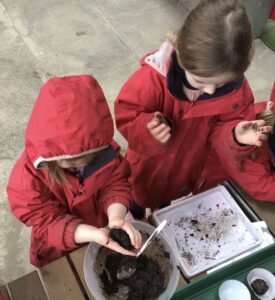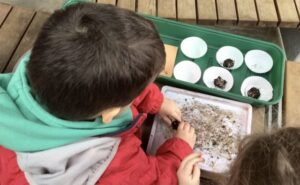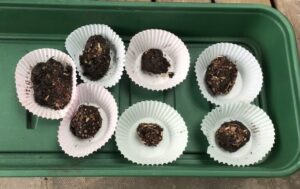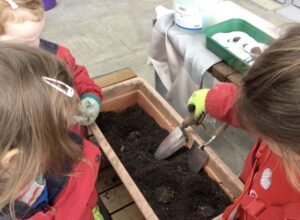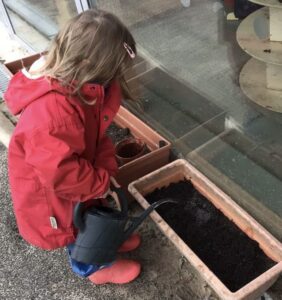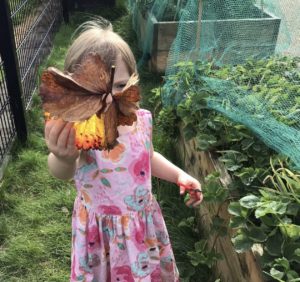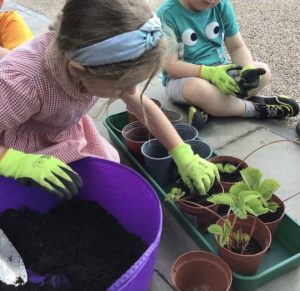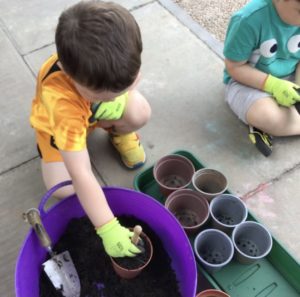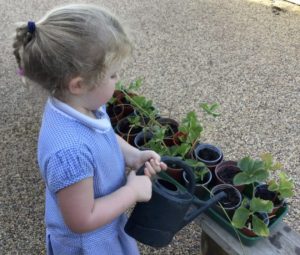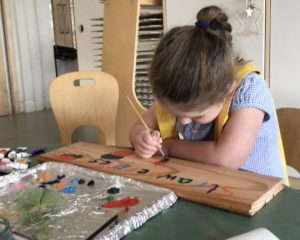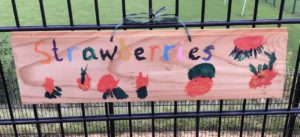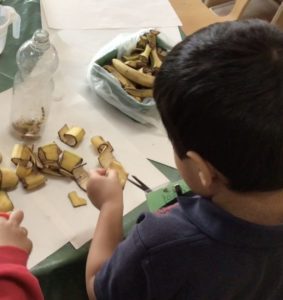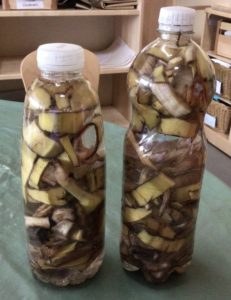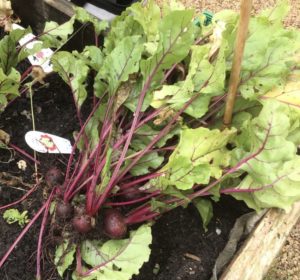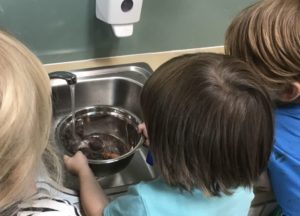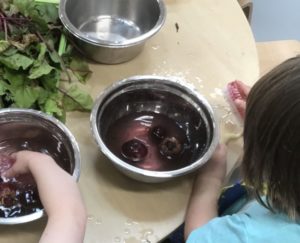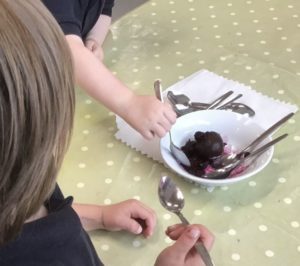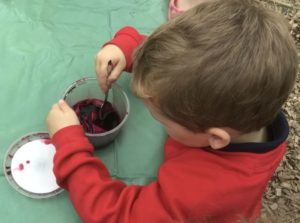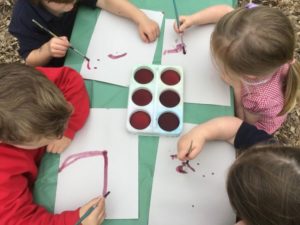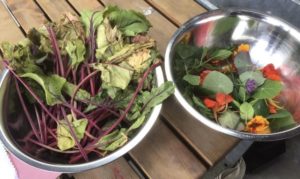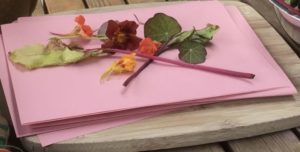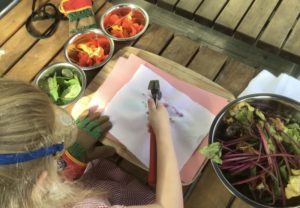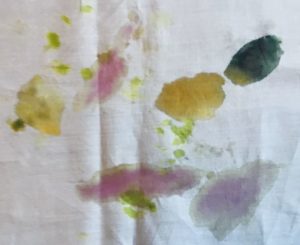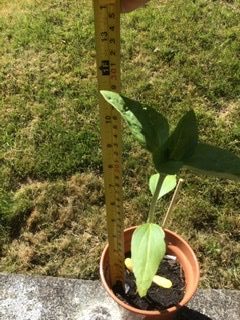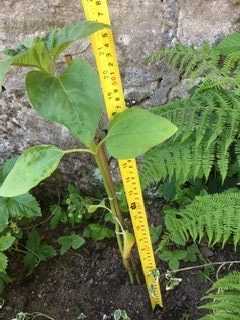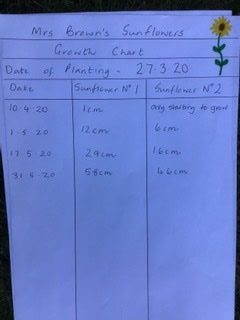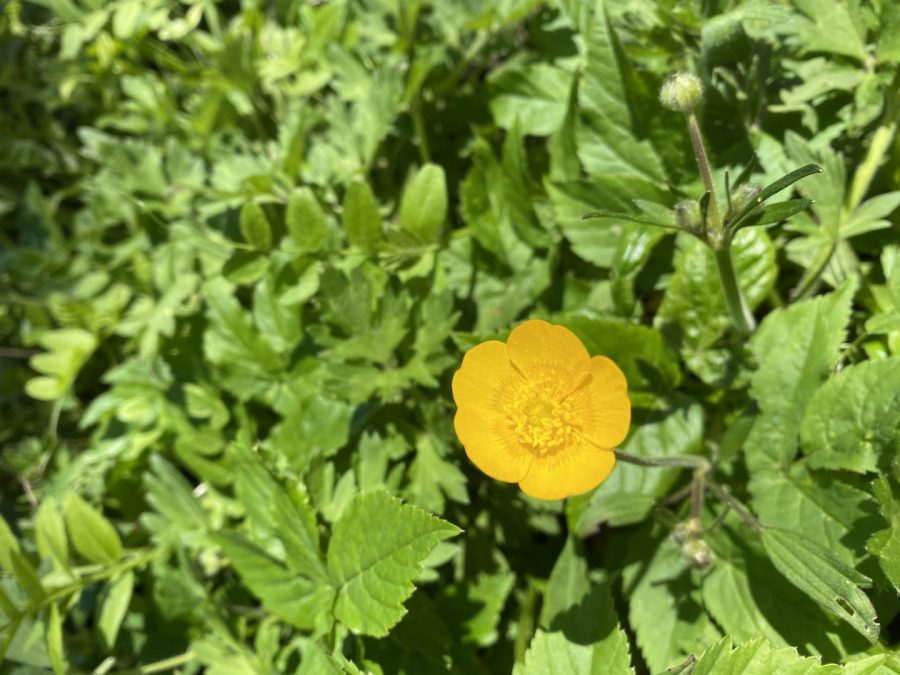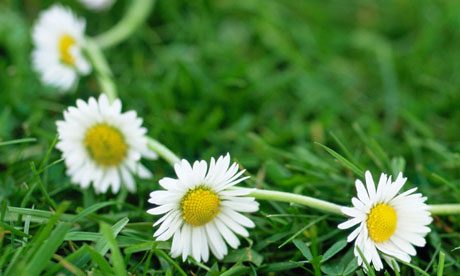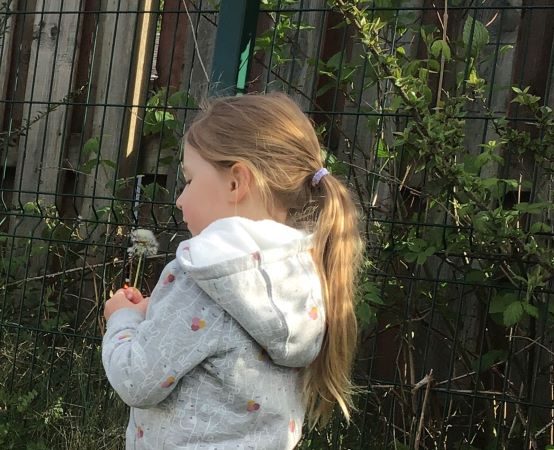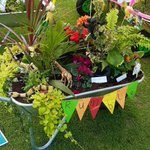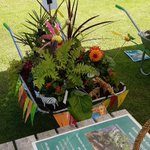Being outdoors has many benefits to children’s wellbeing and development. It has a positive impact on mental health as the body increases production of the feel-good hormone serotonin and reduces production of the stress hormone cortisol. Being outdoors provides lots of opportunities for physical activity, which increases muscle strength, stamina and bone density as well as reducing obesity. The NHS recommends that children under 5 years have at least 3 hours of physical activity daily. One final benefit is that spending time outdoors can lead to improved sleep.
At the moment children do not have the option of visiting their local playpark so here are just a few ideas of what you might do together outdoors…
Scavenger Hunts turn any walk into an adventure! Look for signs of spring, shapes, things that are one chosen colour, numbers (in order), make up your own list or download one from online….

Explore nature in the garden Go on a minibeast hunt – look under stones, pots, logs, under plants for creepy crawlies. Use an old plastic container such as a yoghurt pot to put them in if you don’t have a bug box.
Some other ideas can be found on these websites.
https://www.wildlifetrusts.org/looking-after-yourself-and-nature
https://www.woodlandtrust.org.uk/blog/2020/03/kids-nature-activities-self-isolation/

Gardening Even if you have no seeds to plant, it’s great exercise to help tidy up the garden by weeding and digging over the soil. You might find some minibeasts to investigate as you work.
 Don’t forget to plant the sunflower seeds from your Family Learning Bag. You might try growing new plants from fruit and vegetables that you have been eating – apples, potatoes and peppers are good ones to try.
Don’t forget to plant the sunflower seeds from your Family Learning Bag. You might try growing new plants from fruit and vegetables that you have been eating – apples, potatoes and peppers are good ones to try.
Family Sports Day Everyone likes a bit of competition!
Try some novelty races – ‘egg’ and spoon, balancing a beanbag (or rolled up pair of socks) on your head, penguin waddle (hold a ball between your knees), crab walking, wheelbarrow race, dressing up, shoe box slide (put empty shoe boxes on your feet)…

Make you own assault course – go under, over, along, up, down. Use whatever you have available – garden chairs, tables, slides, planks of wood, old sheets, skipping ropes. Time how long it takes for each person to complete.
Target games – who can get closest to the target? You c ould use a bucket as a target or make one on the ground. Throw balls, rolled up socks, wellies… Just make sure there is nothing breakable in the way.
ould use a bucket as a target or make one on the ground. Throw balls, rolled up socks, wellies… Just make sure there is nothing breakable in the way.
Or you could make some skittles using tin cans or plastic bottles.
make some skittles using tin cans or plastic bottles.
We hope you are inspired to have fun in the outdoors and don’t forget to share with us on Twitter @GlenwoodFC #Glenwoodlearningathome


